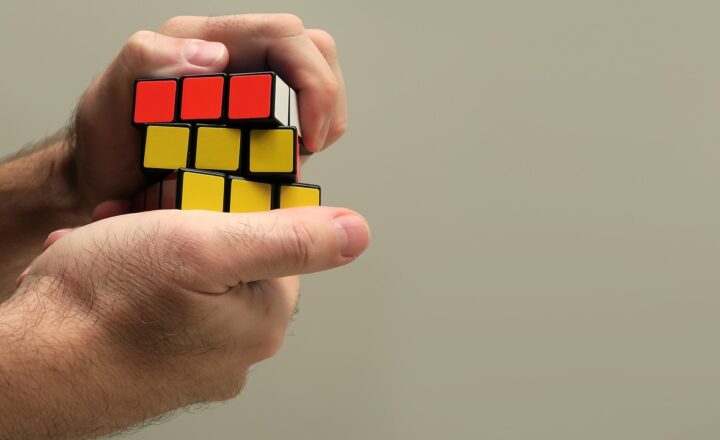The Science Behind Why Some People Are More Creative Than Others
November 16, 2024

Creativity is a fascinating phenomenon that intrigues scientists, psychologists, and artists alike. It is the driving force behind innovations, groundbreaking art, and unique solutions to complex problems. But why is it that some individuals seem to possess an innate ability to think outside the box, while others struggle to generate original ideas? In this article, we delve into the science behind creativity, exploring the factors that contribute to creative thinking and uncovering the secrets of the most imaginative minds.
1. Understanding Creativity: What is it?
Creativity can be defined as the ability to produce new and original ideas, solutions, or expressions. It often involves the capacity to see connections between seemingly unrelated concepts, allowing individuals to generate innovative outcomes. Creativity is crucial not only in the arts but also in sciences, business, and everyday problem-solving. To understand why some people are more creative, we must explore the underlying mechanisms that drive creative thought.
2. The Role of Divergent Thinking
One of the primary components associated with creativity is divergent thinking. This cognitive process refers to the ability to generate multiple solutions to a given problem. Unlike convergent thinking, which focuses on finding the single correct answer, divergent thinking encourages open-ended exploration and the consideration of various possibilities.
Research, including studies conducted by psychologist J.P. Guilford, has shown that individuals who exhibit strong divergent thinking skills tend to be more creative. They are capable of formulating a wider range of ideas, leading to innovative concepts that might not occur to those with a more linear thought process.
3. Neurological Factors at Play
The human brain is complex, and recent advancements in neuroscience have shed light on how different brain structures contribute to creativity. Understanding the neural correlates of creative thinking is essential for unraveling why some individuals excel in this domain.
Studies using functional Magnetic Resonance Imaging (fMRI) have found that creative individuals often display increased activity in the default mode network (DMN), a brain region associated with spontaneous thought and daydreaming. Interestingly, the DMN is more active during periods of rest or mind-wandering, suggesting that creative ideas often blossom when individuals allow their minds to drift.
Moreover, creativity is also linked to the executive functioning network, which governs complex cognitive tasks, self-regulation, and decision-making. A balance between the DMN and the executive functioning network appears to foster optimal creativity.
4. Personality Traits Differentiating Creative Minds
Research in psychology indicates that certain personality traits are more commonly associated with creativity. For instance, individuals who score high on openness to experience tend to be more imaginative and willing to explore novel ideas and unconventional approaches. Furthermore, high levels of self-efficacy and intrinsic motivation often correlate with greater creative output.
Additionally, traits such as risk-taking and tolerance for ambiguity are often found in creative individuals. They are more likely to embrace uncertainty and are less deterred by the fear of failure. This openness helps them explore diverse paths, ultimately leading to groundbreaking ideas and artistic expressions.
5. The Impact of Environment and Culture
While biological and psychological factors play significant roles in creative ability, environmental influences cannot be overlooked. Creative individuals often thrive in supportive and stimulating environments that nurture their talents. Educational institutions, workplaces, and cultures that value creativity promote an atmosphere where new ideas can flourish.
Cultural perspectives can also influence creativity. Societies that endorse risk-taking, collaboration, and diverse viewpoints tend to foster higher levels of creativity. Hence, many creative minds come from liberal environments that encourage questioning norms and embracing a range of ideas.
6. The Role of Experiences and Practice
While innate traits and predispositions are essential, conscious effort and practice play crucial roles in developing creativity. Engaging in creative activities regularly, such as writing, painting, or problem-solving exercises, enhances one’s capacity for creative thought. Creativity is not merely an inborn talent; it is a skill that can be cultivated through deliberate practice.
Moreover, diverse life experiences contribute significantly to one’s creative abilities. Traveling, learning new skills, or interacting with different cultures and perspectives can broaden one’s thought processes, leading to innovative outcomes.
7. Conclusion: Creativity is Multifaceted
Understanding why some people are more creative than others involves examining a complex interplay of neurological, psychological, and environmental factors. Divergent thinking, the balance of brain activity, personality traits, supportive environments, and life experiences collectively shape our creative capabilities. Creativity is not a static trait; it can be developed and nurtured.
As we continue to explore the depths of human creativity, it becomes clear that fostering this unique skill is vital for innovation and progress. By supporting creative endeavors and embracing diverse experiences, we can open the door to a world of possibilities, inspiring imaginative thinking in ourselves and others.







